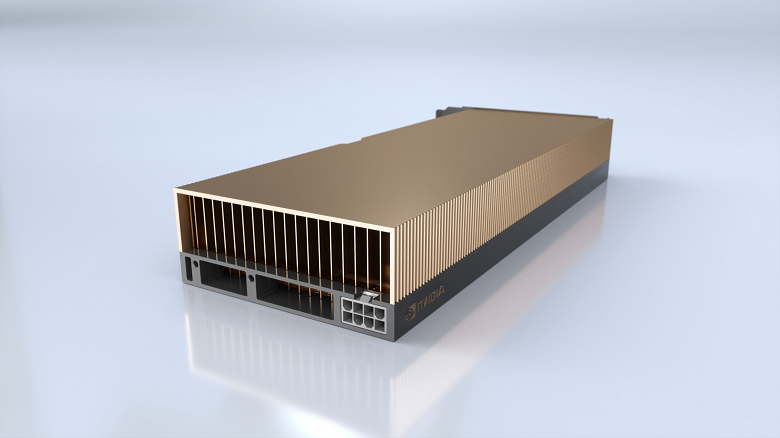NVIDIA Introduces Virtualization-Enabled Server Accelerator A40
At GTC 2020, NVIDIA announced two new accelerators: RTX A6000 and A40. Both are almost identical copies, but differ in performance – the A40 is a familiar full-size dual-slot card for servers with passive cooling and power consumption of 300 watts.
The A40 is based on the 8nm GA102 chip (10752 CUDA cores, 336 Tensor cores, and 84 RT cores), supplemented with 48GB GDDR6 ECC memory and a 384-bit bus. The presence of NVLink3 allows you to combine two cards, getting 96 GB of shared RAM. PCIe 4.0 x16 is used to connect to the host system. Alas, the company has not yet announced the frequencies of memory and core, as well as the level of performance.

The novelty is focused on 3D / CAM and other modeling and visualization systems in virtualized environments – like its older brother in the A40, it has support for up to 7 vGPUs with a memory capacity from 1 to 48 GB. But MIG support, apparently, is not yet available. However, the rest of the functional blocks are still there, so the map can be used for computation and machine learning. There is also one coding unit and two video decoding units, which also support AV1.
Of the curious features, we note that the ESP (4 + 4) CPU connector is used for power supply, and not the eight-pin PCIe connector. In addition, the card has three DisplayPort 1.4 video outputs, which are disabled by default – they are not needed in the server anyway. They can be forcibly enabled, but then the vGPU function will not be available. Also, the A40 has a separate CEC 1712 crypto chip for Secure Boot and other security functions, and it itself complies with NEBS Level 3, which makes it possible to certify devices with it for use in industrial (and other adverse) conditions.
Deliveries of new items will begin in the first quarter of next year. However, as before, it will be focused on OEM equipment suppliers, so we will see it as part of finished products and in the clouds, rather than on store shelves.
Related materials:








